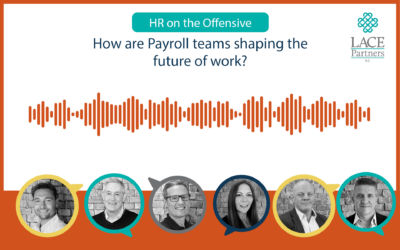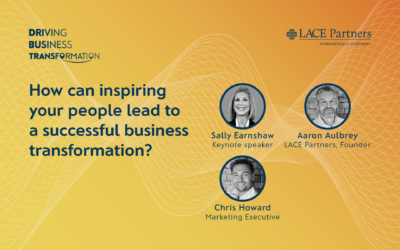During 2022 we launched a campaign looking at HR’s ‘one big thing’ and one of the biggest challenges Chief People Officers (CPOs) said they were facing was the talent attraction and retention issue. This issue has been a longstanding one for organisations.
Organisations are now looking at alternative talent pools. Tim Ringo in our team recently wrote an article on the impact that tapping in to the protirees market can have for businesses, which has been followed by the Government Spring Budget, that looked to incentivise groups of people to return to work. Today’s blog considers the ways in which organisations can ‘plug skills gaps’ and, specifically, how in some instances the people within these ‘untapped’ talent pools can in some instances be more productive than traditional talent pools.
The global HR perspective
Over the past five weeks Tim took part in a number of speaking engagements; from Switzerland, to Malta, Kuala Lumpur, Bangkok, Dubai and Riyadh. All in all, speaking to over 600 people across regions that span nearly half the globe.
Using polling software, Slido, Tim was able to ask the audiences several questions, and three key themes emerged as consistent across all audiences over these regions:
- HR is not preparing for recession as they see very little signs in their organisations that this is coming; instead, their most urgent focus is on attracting and retaining talent, as voluntary attrition levels remain high
- Employee experience scored at or near the top as an area that is garnering a lot of focus as well
- Most organisations are reporting significant increases in people engagement which is then resulting in improved people productivity as more flexible and hybrid working is in put place. The workforce is reacting very positively to these changes.
So, despite the “doom and gloom” scenarios playing out as continually predicted, organisations are finding that they are more focused on strategic people initiatives that are changing the way we work and perform. Quite a positive situation in the HR space.
Neurodiversity: Still the untapped talent pool?
Neurodiversity in the workplace is beginning to have build momentum in many organisation’s talent strategies. In just the past few years several of the world’s top companies have put in place active and targeted programs to recruit neurodiverse individuals. Unfortunately, all too often, this pool of exceptional talent is left on the side-lines.
Tim recently met a young man on the autistic spectrum, Oliver Fenghour, who describes the challenges he has faced in finding a new role:
Around 18 months ago I decided that the time was ripe to move onto pastures new and see more of what was out there for those such as myself on the autistic spectrum.
When I joined Sainsburys it seemed apparent then that employers and society had little in the way of knowledge or understanding of those such as myself on the autistic spectrum. When I left Sainsbury’s, I thought that with the implementation of the Equality Act in 2010 and the strive to become a diverse and inclusive society that opportunities for those on the autistic spectrum with compassionate, patient employers would be more widespread.
Yet, my experiences since leaving Sainsbury’s could not have been more markedly different with employers who seemed more focused on the bottom line, with limited understanding or patience to support and develop autistic talent within the workplace. My own personal experiences are sadly very similar to many others on the autistic spectrum. Evidence compiled from the National Autistic Society suggests that only 32% of people on the spectrum are in some form of employment. Yet, in the UK an estimated 700,000 people have autism and globally this figure is some 70 million.
As a society we seem hardwired by this perception that being disabled must mean that you have a physical impediment. This has meant that many people with ‘invisible disabilities’ such as autism have been largely ignored or forgotten about by society. However, recently it was announced that people with ‘hidden disabilities’ such as autism can have the right to access blue badges, allowing them to park in disabled spaces in car parks. Yet, this is only one small step on what continues to be a long and arduous journey for those on the autistic spectrum to gain recognition and acceptance of their differences in a society that is suspicious of difference and wary of change.
Employing people with autism has many key benefits such as:
- Distinctive logical and analytical capabilities
- Sustained concentration and perseverance even when tasks are repetitive
- Conscientious, loyalty, and sincerity
- An exceptional eye for details, deviations and potential errors
- A strong interest in factual matters and comprehensive technical expertise.
Oliver’s story is a compelling one, but unfortunately, all too common. However, despite the challenges he has faced, he can see change coming. With the right support, guidance and training in place, autistic employees, and the neurodiverse, can flourish within your organisation.
What impact will the Spring Budget have?
Back in January Tim talked about the fact that the Government could be on the verge of redefining retirement and as the Spring Budget was announced a few short weeks ago, it is clear that efforts are being made to address how to tap in to previously under-utilised talent pools. The Government increased the tax relief on pensions in attempt to bring people back into employment but the question remains as to how many businesses will look to tap in to this talent pool?
In February the FT columnist Camilla Cavendish wrote an article titled:“Tempting back older workers means ditching business as usual”. An excellent read, where she refers to government data that shows a majority of over 50’s that retired over the past three years would return to work if:
- They would not have to work for a terrible boss (too often younger managers are dismissive of older workers)
- They could work flexibly.
The question: is your organisation ready to accommodate their requests? In our experience too many organisations are not properly equipped to recruit and retain over 50’s, an increasingly important segment of the workforce.
In addition, the aim of getting parents back in to work by offering greater childcare incentives (30 hours of free childcare for 38 weeks a year) may be welcome for some, but what happens if the childcare system cannot cope with increased demand of services? And with so many individuals focusing on wellbeing and spending more time with family post pandemic, what work has been done to assess whether this will drive enough demand for increasing talent pools?
It’s true that HR organisations are trying to be accommodating in offering on-site childcare. However, CEO’s and CFOs remain reluctant to invest in this. For example, PwC’s Pulse Survey – November 2022 showed 76% of CHROs believed the organisation should invest in childcare centres for employees, but only 37% of CFOs agreed. A huge gap in C level intentions.
Alumni
We won’t labour the point on this too much, as David Pacifico from our team recently wrote a blog on why more businesses need to invest time in their corporate alumni programmes, but the fact remains that this is an opportunity to leverage the much publicised trend surrounding boomerang employees. In a recent poll we ran on LinkedIn, all the respondents said that they felt their business wasn’t making the most of its alumni network. Why not? If an organisation can ensure that it maintains positive relationships with its employees, then tapping into that pool of people should be a lot easier as they have an affinity with the business, its culture and employee value proposition.
This is a major missed opportunity mainly driven by subpar employee branding efforts and a lack of effective Strategic Workforce Planning (SWP). Companies that do both well, tend to make the most of Alumni and other effective talent pools.
Apprentices
Businesses also look to be turning to apprenticeships to address the skills gaps that they have. As an alternative to taking graduates straight from university, more organisations are providing a route for young people to enter the labour market straight after finishing second level education. This approach provides them with on-the-job training and the opportunity to gain a qualification at the same time. Government policies are putting a focus on how apprenticeships can be used to increase national productivity and social mobility, improving wage and employment prospects for individuals.
According to the CIPD, hiring apprentices brings a number of benefits to the employer; 80% of employers have maintained or improved future skills in the business, 70% of employers have seen improvements in the goods and services they offer, and 66% of employers have experienced improved staff morale.
The benefits associated with apprenticeships bodes the question ‘Do we really need degrees?’ Is a three to four-year degree worth the time and the money spent gaining it? This is a broad question and there are most definitely arguments both for and against attending tertiary education. However, if organisations can identify what skills they need now, and in the future, they could utilise apprenticeship programs to develop individuals and provide them with the skills required.
How are you plugging your skills gaps?
The answer to this question will invariably differ for each business based on the type of organisation they have, the culture, the processes and systems they have in place, technology, infrastructure, etc. However, what is clear is that businesses not asking themselves this question without an idea of what works best for them, will invariably fall behind the curve.
If you’d like to talk to us about how you can tap in to talent pools that you’d previously not focused on, or want advice on your talent strategies, then reach out to us using the form below.






